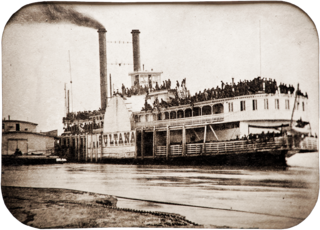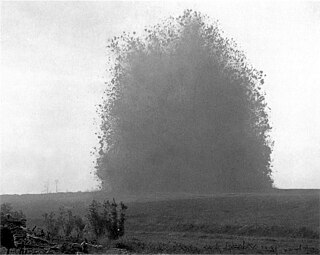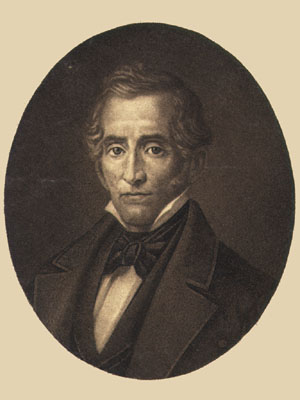
Natchitoches is a small city and the parish seat of Natchitoches Parish, Louisiana, United States. Established in 1714 by Louis Juchereau de St. Denis as part of French Louisiana, the community was named after the indigenous Natchitoches people.

The 1947 Texas City disaster was an industrial accident that occurred on April 16, 1947, in the port of Texas City, Texas, United States, located in Galveston Bay. It was the deadliest industrial accident in U.S. history and one of history's largest non-nuclear explosions.

Sultana was a commercial side-wheel steamboat which exploded and sank on the Mississippi River on April 27, 1865, killing 1,169 people in what remains the worst maritime disaster in United States history.

The Boyd massacre occurred in December 1809 when Māori of Ngāti Pou from Whangaroa Harbour in northern New Zealand killed and reportedly consumed between 66 and 70 European crew members from the British brigantine ship Boyd. This was the highest number of Europeans killed by Māori in a single event in New Zealand.

The Lexington was a paddlewheel steamboat operating along the Northeastern coast of the United States from 1835 to 1840. Commissioned by Cornelius Vanderbilt, it was one of the fastest and most luxurious steamers in operation.

There have been many extremely large explosions, accidental and intentional, caused by modern high explosives, boiling liquid expanding vapour explosions (BLEVEs), older explosives such as gunpowder, volatile petroleum-based fuels such as gasoline, and other chemical reactions. This list contains the largest known examples, sorted by date. An unambiguous ranking in order of severity is not possible; a 1994 study by historian Jay White of 130 large explosions suggested that they need to be ranked by an overall effect of power, quantity, radius, loss of life and property destruction, but concluded that such rankings are difficult to assess.

Edward Douglass White was tenth Governor of Louisiana and a member of the United States House of Representatives. He served five non-consecutive terms in Congress, as an adherent of Henry Clay of Kentucky and the Whig Party.
The explosion of the paddle steamer Saluda, near Lexington, Missouri, in 1852, was one of the worst disasters in Missouri River history.

Steamboats on the Columbia River system were wrecked for many reasons, including striking rocks or logs ("snags"), fire, boiler explosion, or puncture or crushing by ice. Sometimes boats could be salvaged, and sometimes not.

A powder mill was a mill where gunpowder is made from sulfur, saltpeter and charcoal.

Henry Boyce was a United States district judge of the United States District Court for the Western District of Louisiana.

The Lucy Walker steamboat disaster was an 1844 steamboat accident caused by the explosion of the boilers of the steamboat Lucy Walker near New Albany, Indiana, on the Ohio River. The explosion occurred on the afternoon of Wednesday, October 23, 1844, when the steamer's three boilers exploded, set the vessel on fire, and sank it. It was one of a number of similar accidents of early 19th-century riverine transportation that led to important federal legislation and safety regulations. The vessel's owner was a Native American; her crew were African-American slaves, and her passengers represented a cross-section of frontier travelers.
Oriental Powder Company was a gunpowder manufacturer with mills located on the Presumpscot River in Gorham and Windham, Maine. The company was one of the four largest suppliers to Union forces through the American Civil War.
The Scofield Mine disaster was a mining explosion that occurred at the Winter Quarters coal mine on May 1, 1900. The mine was located at 39°42′57″N111°11′17″W near the town of Scofield, Utah. In terms of life lost, it was the worst mining accident at that point in American history. The explosion is also a key element in the plot of the Carla Kelly novel My Loving Vigil Keeping.

The Battle of Turtle Gut Inlet was an important, early naval victory for the Continental Navy and the future "Father of the American Navy", Captain John Barry. It was the first privateer battle of the American Revolutionary War. The battle resulted in the first American casualty of the war in New Jersey, Lieutenant Richard Wickes, brother of Captain Lambert Wickes. It was the only Revolutionary War battle fought in Cape May County.

The Leiden gunpowder disaster was an event in which a ship carrying hundreds of barrels of black powder exploded in the town of Leiden in the Netherlands on 12 January 1807. The disaster killed 151 people and destroyed over 200 buildings in the town.
SS Sardinia was a passenger-cargo ship which caught fire off Malta's Grand Harbour on 25 November 1908, resulting in at least 118 deaths. The ship was carrying Moroccan pilgrims on the way to Mecca. It is believed that a cooking fire on deck accidentally ignited nitrate in one of the ship's cargo holds, resulting in a number of explosions and causing the ship to run aground.












